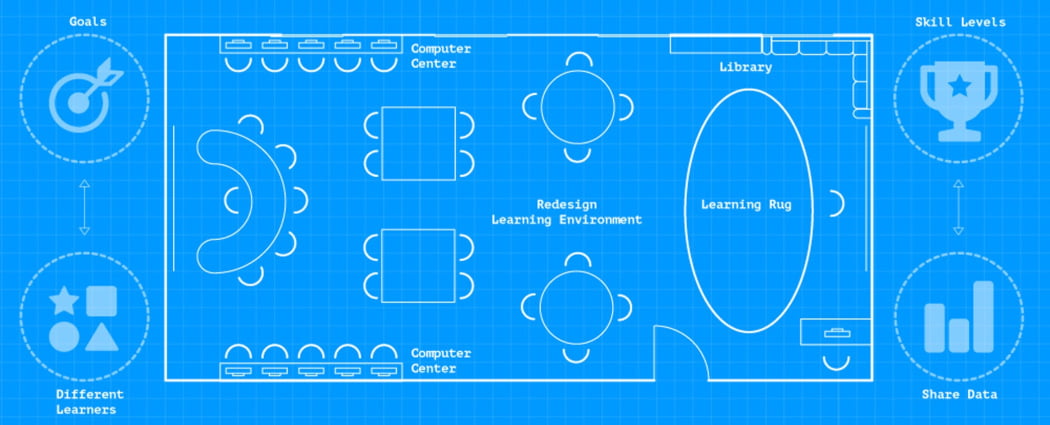The Personalization of Education
I believe that the educational process has two sides – one psychological and one sociological…. Of these two sides, the psychological is the basis. The child’s own instincts and powers furnish the material and give the starting point for all education.
— John Dewey
The personalization of education is a topic of interest to most educators today. What is it and what does its widespread adoption signal for the design of learning spaces?
Katrina Stevens, Deputy Director in the Office of Educational Technology at the U.S. Department of Education, tells us that “Personalized learning refers to instruction in which the pace of learning and the instructional approach are optimized for the needs of each learner….” She goes on to describe five concepts common to the definitions of personalization put forward by a number of organizations seeking to resolve the confusion surrounding the term:
- The pace of learning is adjusted
- Learning objectives, approaches, content and tools are tailored and optimized for each learner
- Learning is driven by learner interests
- Learners are given choice in what, how, when, and where they learn
- Learning is often supported by technology
Personalization is a different instructional methodology that puts the student at the center rather than the teacher or curriculum. It represents a shift in focus. It is a movement away from the factory, one size fits all model of schooling.
Personalization of learning is not a new concept. John Dewey wrote extensively about the importance of it more than a century ago. What is new is the ability of digital technology to support it. Especially since the publication of Clayton Christensen’s book, Disrupting Class, there has been much speculation about what effects technology will have on education. Personalization of education represents one of the many good ways that technology is disrupting education. It used to be impossible for the high school English teacher with 120 students to personalize his/her instruction very much. It is now becoming quite doable.
In practice, collaboration and conferencing are important elements of personalized learning. Students and teachers need time and space to meet one-on-one to plan and discuss work, and to provide clarification and feedback. For greater student agency students need opportunities to collaborate with their peers on subjects of common interest. Student Commons, break out spaces, and flexible seating in classrooms are just a few of the means schools are finding to provide spaces for student collaboration.

In a more personalized educational environment, students and teachers need effective and reliable access to rich learning resources. This of course requires significant broadband connectivity and robust IT infrastructure throughout the school facilities. Student information and assessment platforms are in use in most school districts. Connecticut, Massachusetts, and other states provide schools with extensive networks of library, research, and other useful resources.
Unlike schools without walls, personalization is not a fad or passing trend. Look no farther than the teacher(s) you remember who took a personal interest in you. Learning is always personal. Impactful learning is always deeply personal. Good teachers have forever personalized education through their sincere concern for each of their students. The use of technology to support teachers in making their teaching more personal for each student will only grow as evidence of its demonstrable effectiveness proliferates.
Schools have always been warm, safe, inviting places for the young to learn what they need and want to know to continue to grow and prosper. As technology facilitates the increasing personalization of education, schools will continue to be places where good teachers serve students as they always have, but more expansively, more inclusively, and in more personally meaningful ways.
